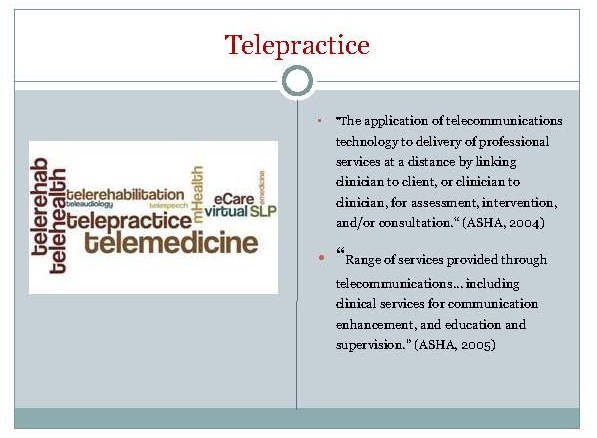This text-based course is a transcript of the webinar, “Beyond the Technologies: Administrative Considerations in Telepractice,” presented by Carol C. Dudding, Ph.D., CCC-SLP.
Click here for supplemental handouts.
>> Carol Dudding: I am glad to discuss and share information with you about the administrative considerations when setting up a telepractice program. Before we get started, I would like to get some information from all of you about what your needs and interests are. How many of you are just now considering a telepractice program or at the beginning stages of setting up a program in telepractice, either in audiology or speech pathology? It looks like there are about 11 of you who are actually setting up or in the beginning stages of setting up a program. How many of you are currently involved in a telepractice program? Two more of you are currently involved, and I assume the rest of the group is gathering information or looking for some CEUs? Either way, I hope that this information proves to be helpful for you in either moving your current program forward or just giving you some things to think about when considering whether it is feasible and applicable to you.
Definitions and ASHA Position
Let’s move on to some background. Figure 1 shows some definitions and terminology that we need to discuss. As we talk later about licensing and especially reimbursement, these terms are going to be important for you to understand.

Figure 1. Terminology and definitions
There is a lot of terminology regarding our topic for today and specifically, you will see the term telemedicine. You also see telerehab, telehealth, teleaudiology, telespeech, mHealth, eCare, etc., and certainly we have ASHA’s definition:

